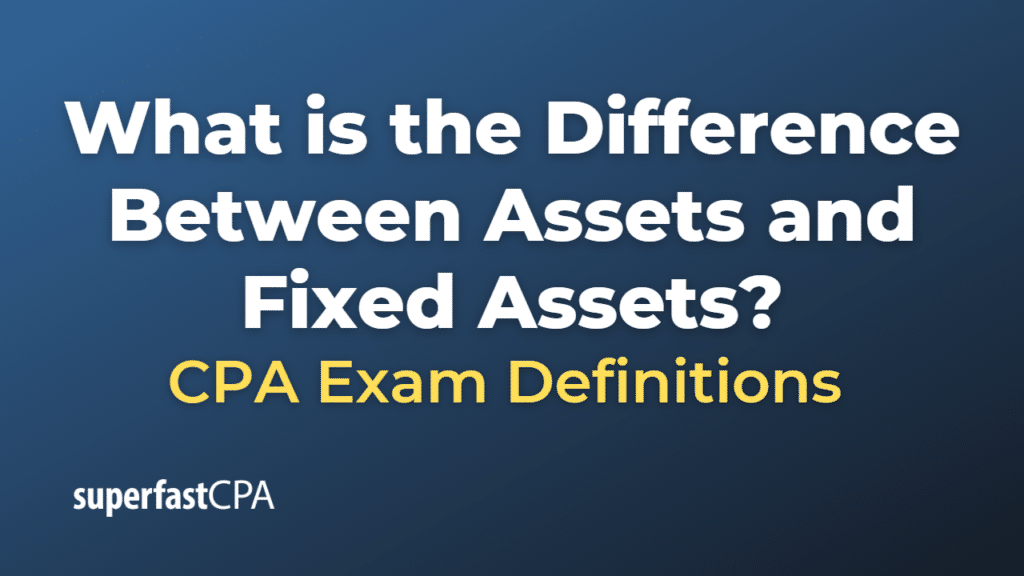Difference Between Assets and Fixed Assets
In accounting and finance, “assets” and “fixed assets” are two terms that refer to different categories of resources owned by a business. Here’s how they differ:
- Assets: An asset is a resource with economic value that an individual, corporation, or country owns or controls with the expectation that it will provide a future benefit. Assets can be classified into two main types: current assets and non-current assets.
- Current Assets: These are short-term assets that can be converted into cash within one year. Examples include cash, marketable securities, accounts receivable, inventory, and prepaid expenses.
- Non-Current Assets: These are long-term assets that are not expected to be converted into cash within one year. Examples include fixed assets, long-term investments, intangible assets (like patents and trademarks), and deferred tax assets.
- Fixed Assets: Also known as tangible assets or property, plant, and equipment (PP&E), fixed assets are a subset of non-current assets. They are physical, tangible assets that a business uses over a long period for the purpose of generating income. They are not intended for sale but for production, supply, rental, or administrative purposes. Examples of fixed assets include land, buildings, machinery, equipment, and vehicles. Fixed assets are subject to depreciation (except land), which is the method of allocating the cost of the asset over its useful life.
So, fixed assets are a category within the broader term of assets. All fixed assets are assets, but not all assets are fixed assets.
Example of the Difference Between Assets and Fixed Assets
Let’s say you own a small bakery business. Here’s how you might categorize your assets:
Assets:
- Current Assets:
- Cash in your bank account: $5,000
- Accounts receivable (money owed to you by customers): $2,000
- Inventory (flour, sugar, baking ingredients, packaging materials): $3,000
- Non-Current Assets:
- Fixed Assets:
- Bakery Equipment (ovens, mixers, refrigerators): $25,000
- Building (if you own it): $200,000
- Intangible Assets:
- Trademark of your bakery’s brand name: $10,000
- Fixed Assets:
In this example, all the items listed above are your assets. They are resources that you own and expect to provide future economic benefit to your business.
Among these assets, the bakery equipment and the building are your fixed assets. They are tangible, long-term assets that are used for the production of goods (in this case, baked items) and aren’t intended to be sold as part of normal business operations. These assets are also subject to depreciation over their useful life.













